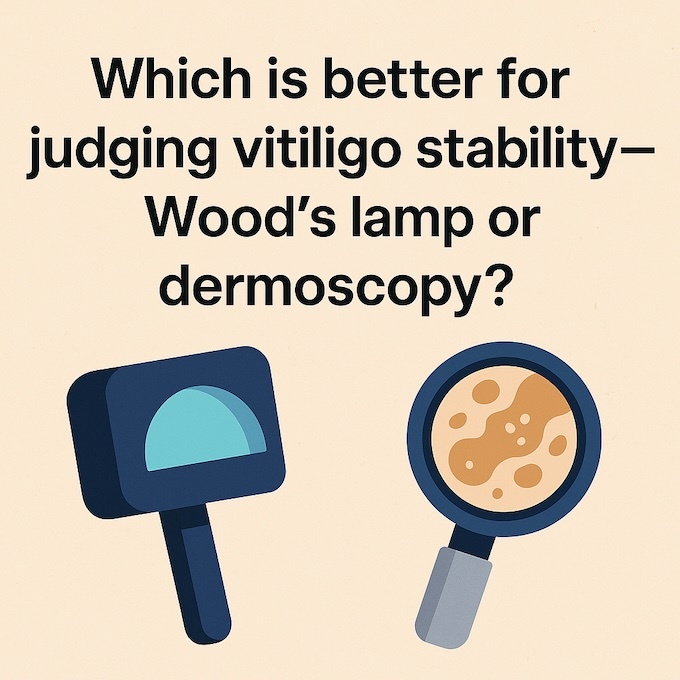Our work is entirely funded by private donations – we receive no money from government. Your money will help us continue funding research into vitiligo and supporting people affected by the condition.
FAQ
Which is better for judging vitiligo — Wood’s lamp or dermoscopy?
A recent study out of India compared the two head-to-head. Both tools correlated fairly well with clinical criteria, but dermoscopy had a slight edge:
- Wood’s lamp: sensitivity 72.3%, specificity 66.7%. Correctly identified stable cases 87% of the time but was weak at ruling out unstable ones (44%).
- Dermoscopy: sensitivity 74.1%, specificity 73.5%. Showed stronger overall accuracy, with an ROC of 0.826 vs 0.695 for Wood’s lamp. It also highlights perifollicular pigmentation, satellite lesions, and micro-Koebner changes — details that matter when planning surgery.
For clinicians: If you’re mainly screening or working in darker skin types, a Wood’s lamp is still useful, dirt-cheap (usually $50–150 for a decent handheld model), and portable.
Dermatoscopes are pricier (anywhere from $500–2,000 depending on optics and digital connectivity), but they give you much richer information and reproducible images — which can guide surgical timing, document progression, and support patient education.
Takeaway: In resource-limited settings or early practice, a Wood’s lamp is a fine start. But if you’re building a vitiligo-focused clinic, investing in a dermatoscope will pay off in precision and clinical confidence.
Suggested reading:
- Vitiligo Patient Journey Map
- Which diseases most commonly accompany vitiligo?
- Which skin conditions can be mistaken for vitiligo?

Published on August 22, 2025
FAQOther Questions
- What's better: laser or phototherapy?
Laser therapy is actually a type of phototherapy. Both rely on light to trigger changes in the skin, but they work differently. Phototherapy usually means a narrow-band UV (NB-...
- How long does it take to treat vitiligo?
Vitiligo, a condition characterized by the loss of skin pigment, can be unpredictable in both progression and treatment. The time it takes to treat vitiligo varies significantly...
- Who is prone to vitiligo?
Vitiligo can affect anyone, regardless of gender, age, or race. Vitiligo prevalence is between 0.76% and 1.11% of the U.S. population, including around 40% of those with the con...
Though it is not always easy to treat vitiligo, there is much to be gained by clearly understanding the diagnosis, the future implications, treatment options and their outcomes.
Many people deal with vitiligo while remaining in the public eye, maintaining a positive outlook, and having a successful career.
Copyright (C) Bodolóczki JúliaBy taking a little time to fill in the anonymous questionnaire, you can help researchers better understand and fight vitiligo.